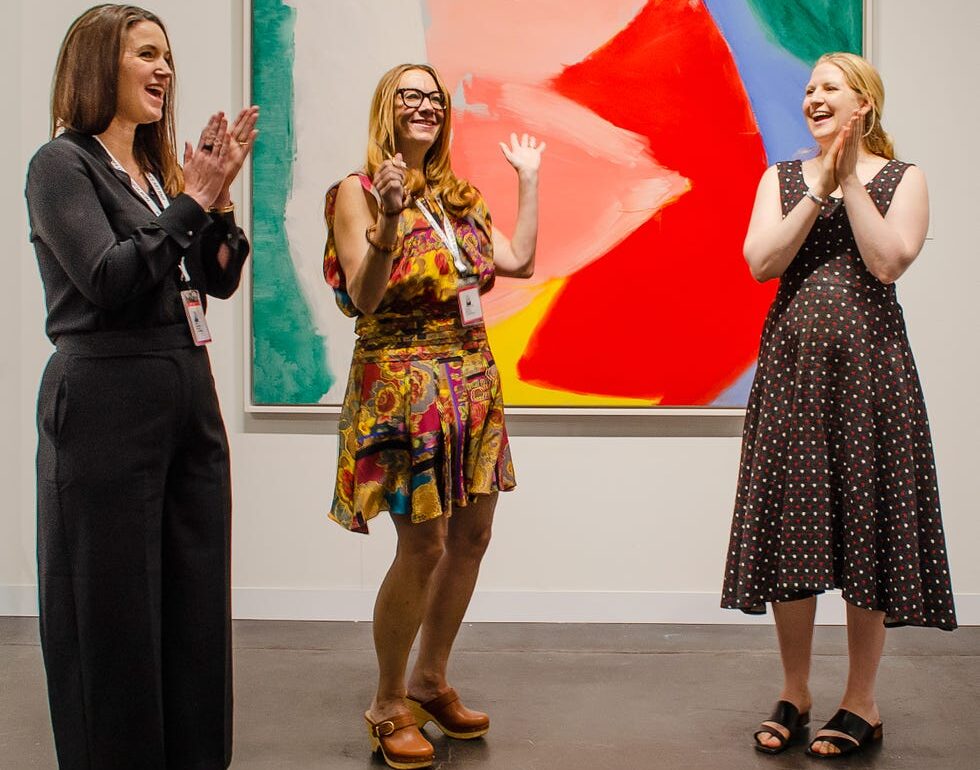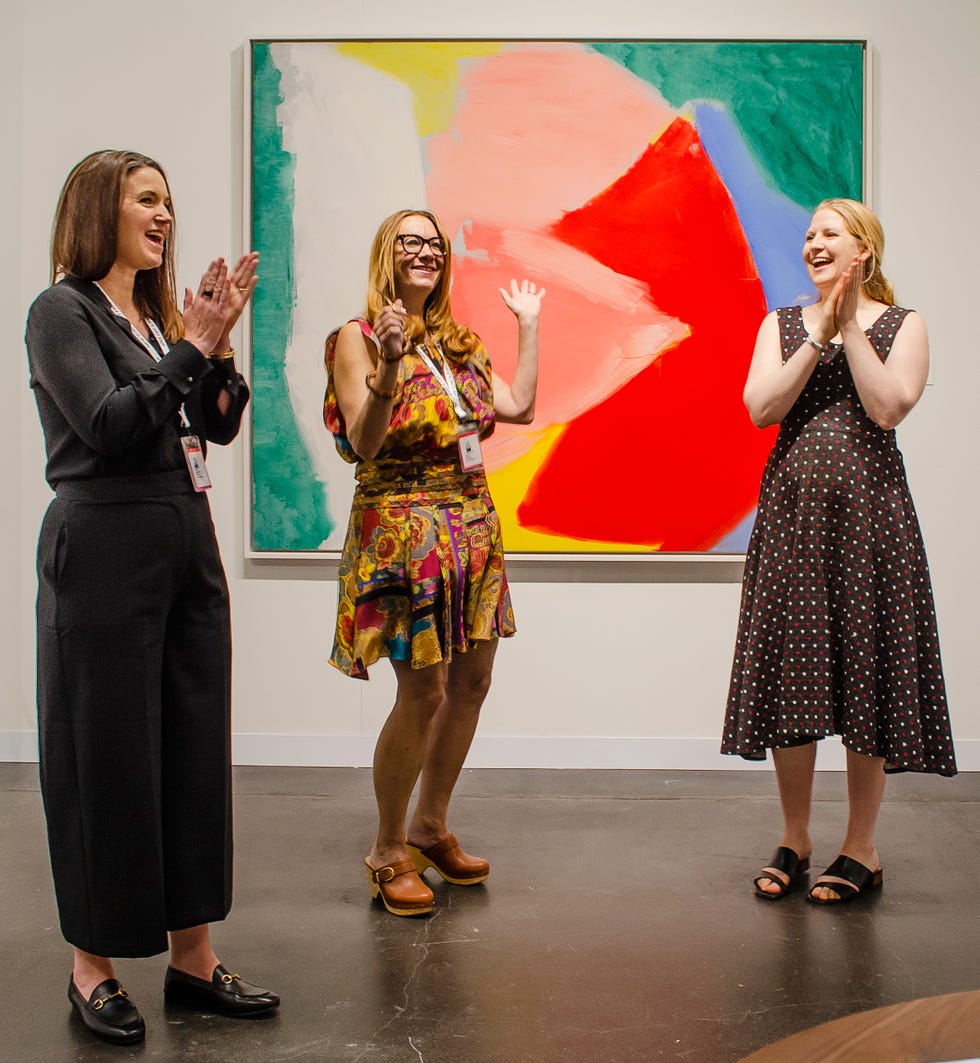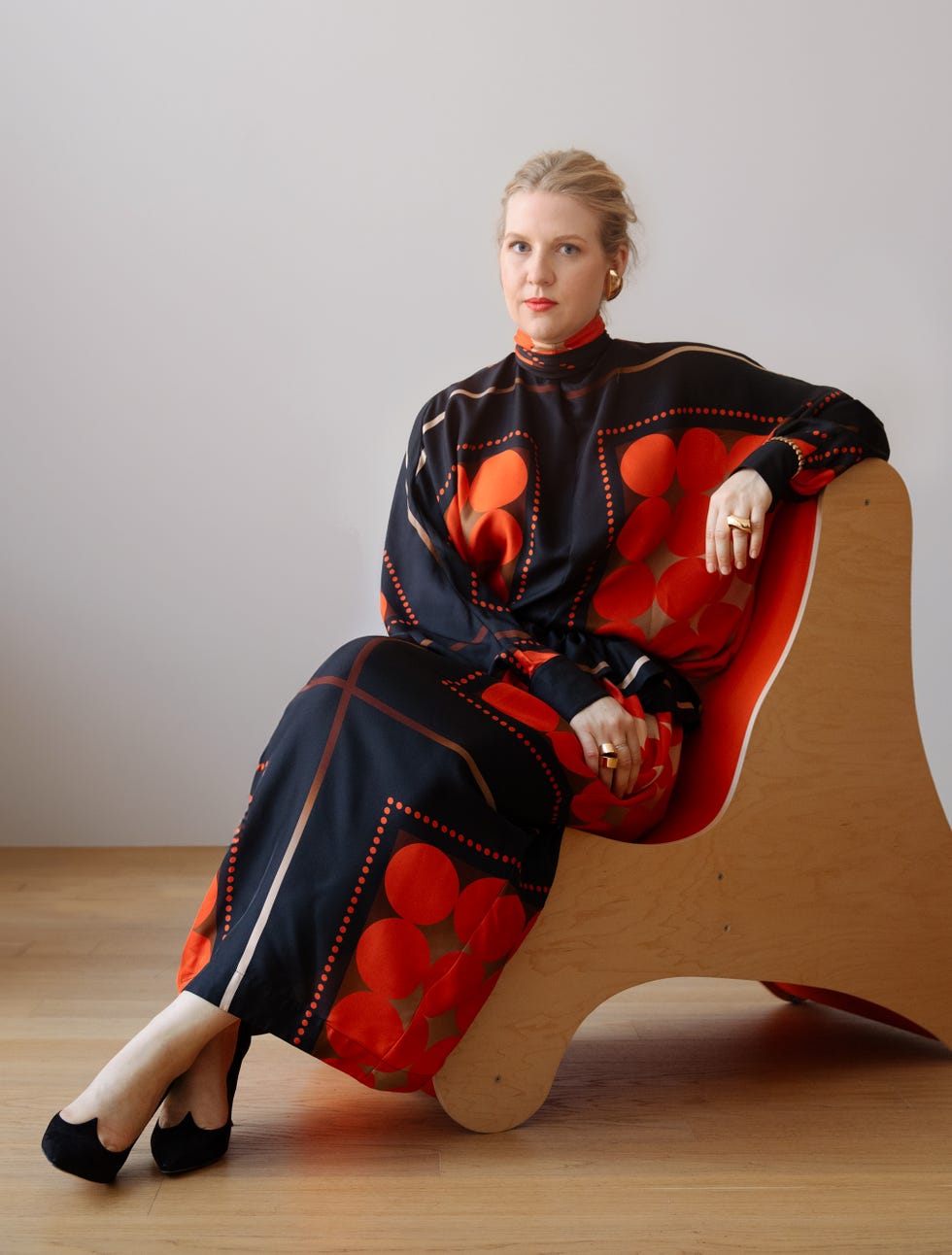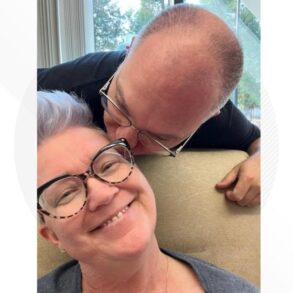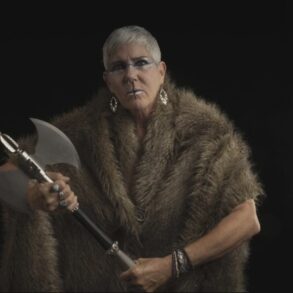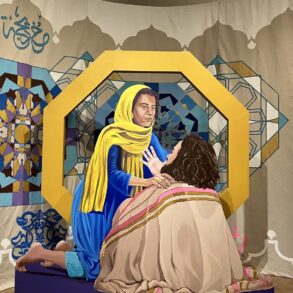Amid the mayhem of art fairs in New York last spring, one booth at the Future Fair in Chelsea stood out. It featured a large sofa planted in the middle of the space on which a young woman invited fairgoers to take a seat beneath a wall of works that she soon revealed was a salon-style showcase for contemporary women artists. For Hall Rockefeller, 31, that fair was an important public moment for Less Than Half, the education and advisory platform she founded to help “culturally curious women find meaning in art by learning to collect and support women artists.”
Rockefeller titled Less Than Half after a 1989 poster by the Guerrilla Girls, an anonymous group of feminist activists who have for decades fought for more equity in the art world. But Rockefeller, whose very name is synonymous with riches, isn’t hiding behind anonymity.
In addition to producing public events at art fairs and auctions, she invites members of Less Than Half to private gatherings as well. This fall, in Art of This Century (the space that once housed Peggy Guggenheim’s New York gallery), Rockefeller hosted the second salon focused on what she calls “matronage”—a feminization of patronage—which featured Jenna Segal, an investor and Broadway producer who revitalized the space and has made it a point to collect every artist featured in Guggenheim’s storied 1943 “Exhibition by 31 Women,” which is thought to have been the first U.S. show of all women artists. A kickoff event last spring featured Victoria Rogers (daughter of former White House social secretary Desirée Rogers), who is on the board of the Brooklyn Museum and who co-founded the Black Trustee Alliance for Art Museums.
This season’s Less Than Half events include a poker night (with a $500 buy-in) at Trotter & Sholer, a Lower East Side gallery; the winner gets a work by a woman artist on the roster. And in December, when the art world descends on Florida for more than a dozen fairs, Rockefeller will speak on the concept of matronage as part of Art Basel Miami Beach’s official programming and will host a party to present Less Than Half’s inaugural Matron of the Year award.
Less Than Half also fosters community and knowledge sharing on a day-to-day basis through a dedicated Slack channel where members discuss acquisitions, wish lists, and the museum and gallery shows on their radars. And it’s not just about what to buy and where to buy it. Rockefeller is organizing a presentation with legal experts on the whys and hows of trusts and estates. “It’s about being a real steward of the work,” she says.
Rockefeller first sensed the need for 21st-century boosterism when she was in college. Over lunch one afternoon at the Hartford, Connecticut, duplex she shares with her husband, a professor, she tells me how, as an art history major at Yale, she made exam prep flashcards of roughly 100 artists to memorize. Only five were women: Mary Cassatt, Georgia O’Keeffe, Judy Chicago, Tracey Emin, and Kara Walker, the “one woman of color,” Rockefeller says. Grad school at the Courtauld Institute of Art in London was much the same. She was struck by “the randomness” of those who were included. “There was no coherent way of building a story around women artists.”
While Less Than Half may be philanthropic in spirit, Rockefeller intentionally rejected the idea of establishing the venture as a nonprofit. “Collecting women artists isn’t charity,” she says. “It’s impact investing. If the art market is not paying attention to women artists, fine. We’ll create a whole generation of women who are paying attention.
“If there’s a generation of women who are buying women artists, you almost don’t need to convince anybody else.” Off the cuff she cites data, from the 2023 Art Basel–UBS art market report, that women art collectors spent $72,500 in the first half of that year, versus $59,000 for men. Rockefeller smiles. “Women are actually the more powerful force.”
But Rockefeller—a great-granddaughter of Vice President Nelson Rockefeller—believes in philanthropy, too. She is poised to effect change from within the Rockefeller Brothers Fund; she recently joined the committee overseeing the David Rockefeller Creative Arts Center, which is housed at the Hudson Valley estate that six generations of her family have called home. “The family stuff,” as she puts it, and the work she is doing through Less Than Half “feed into each other.”
I ask in what ways her endeavors on behalf of women artists are a response to, or perhaps a stance against, the role generations of her family have played in arts philanthropy, including her great-great-grandmother Abby Aldrich Rockefeller, who co-founded the Museum of Modern Art, an institution that established the canon of modern art—and in doing so left out many women. “It’s not like it’s not relevant,” she says with a laugh. “Everyone is the product of their upbringing, but I’m looking toward the future.”
Rockefeller’s chief lament when museums, including MoMA, do show women, is “the disparity between the amount of press that these museums will do for these shows versus where they are in the square footage.” She has observed that men are more likely to get the hallowed double-height exhibition halls, grand galleries, and renowned rotundas, while women are shown in basements, thoroughfares (lobbies, stairwells, elevator banks, etc.), and other oddball annexes that sometimes get used as exhibition spaces. “And you’re counting that as a ‘show’?” she asks pointedly.
Rarer still are real retrospectives of women artists that include investment in original scholarship. Such shows can be “revelatory,” she says, “like reading a biography—a full and total exploration of an artist’s motivations and the arc of her career.”
In her own collecting, Rockefeller purposefully champions artists who are far from being household names. “I want to broaden people’s understandings and scopes.” She pauses on the way to her home office to show me a collagraph by a Cuban woman named Belkis Ayón. Behind her desk is a tidy gallery wall of paintings, textiles, drawings, sculptures, and art in other media by women, including a collage by Jane Ash Poitras, an Indigenous artist from Canada; a bust of Georgia O’Keeffe by Florence Elizabeth Bahr (“A woman artist by a woman artist!”); and a print by Nancy Spero, a “favorite.”
“It’s not about monetary exchange only, like just swapping the budget you’ve been using to buy male artists to buy female artists,” Rockefeller says of her philosophy. “It’s about thinking much more holistically about what the system is that has gotten us to a point where 15 percent of museum collections are artworks by women and where 3 percent of the auction market is works by women artists.” (Her stats, cited with confidence and accuracy, are from the Burns Halperin Report, which quantifies representation in the art world and receives funding from the Ford Foundation.)
At the same time, she recognizes positive changes, too, including in nontraditional spaces. When she observed that New York’s transit arts program featured a preponderance of women, Rockefeller reached out to Sandra Bloodworth, who directed arts and design for the Metropolitan Transportation Authority for nearly three decades. Bloodworth had been waiting for years for someone to notice, she told Rockefeller.
“Lip service can turn to real support,” Rockefeller says. “I’m always counting.”
This story appears in the November 2024 issue of Town & Country. SUBSCRIBE NOW
Laura van Straaten has covered art and culture from more than a dozen countries for The New York Times, W, New York, Wall Street Journal Magazine, The Hollywood Reporter, and most of the top art publications in the U.S., Europe, and the Middle East. She was previously an Emmy- and Webby-winning news and nonfiction producer and executive for NBC News, CNN, PBS and various digital content start-ups. Photo by Lynn Savarese.




